UPVC Ceiling
The main advantage of a UPVC ceiling is the low maintenance, as it removes the need for future repainting, making upkeep much simpler. It also doesn’t require any wet trades, and we generally offer the same pricing as for a traditional plaster and paint job.
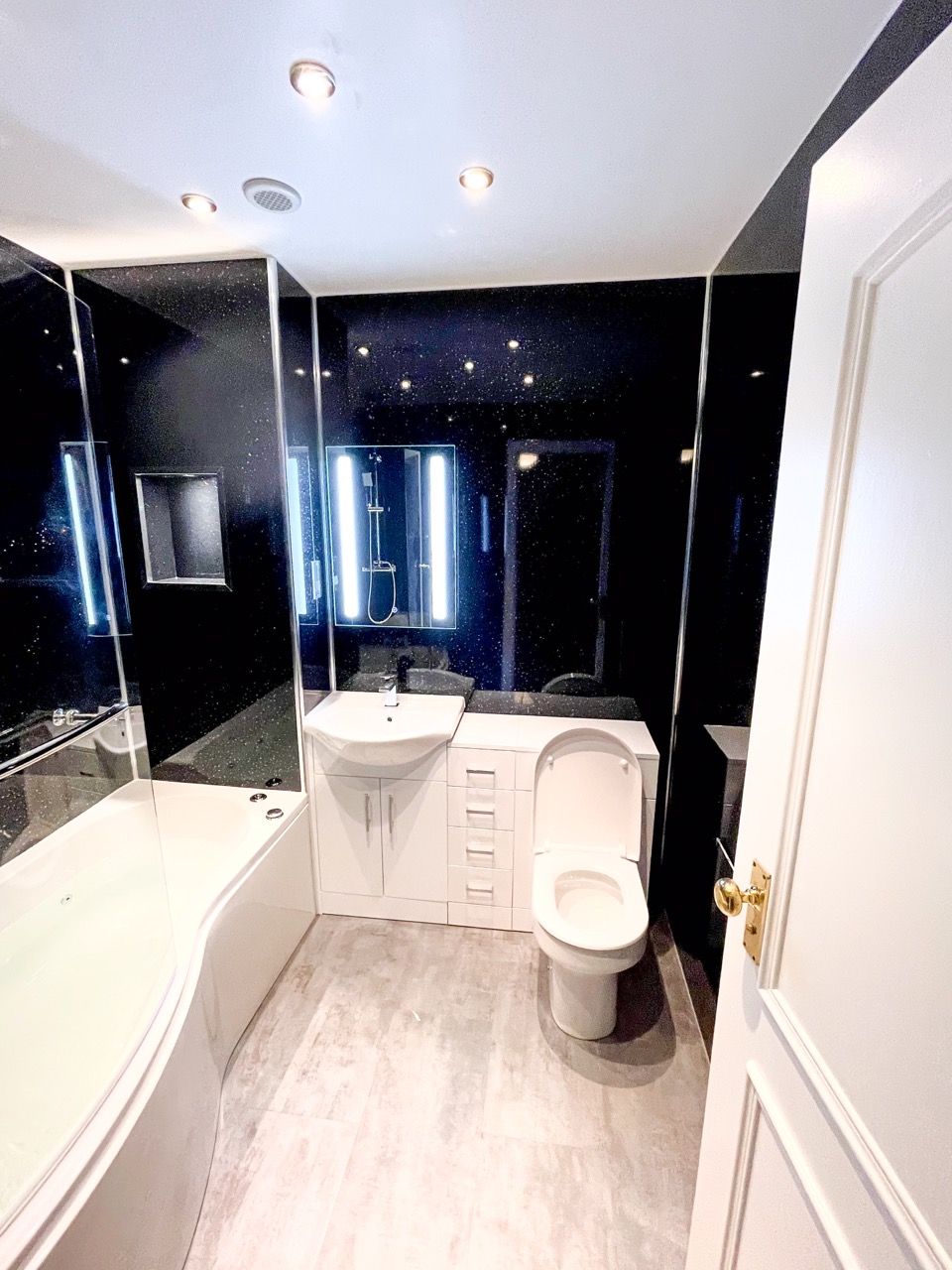
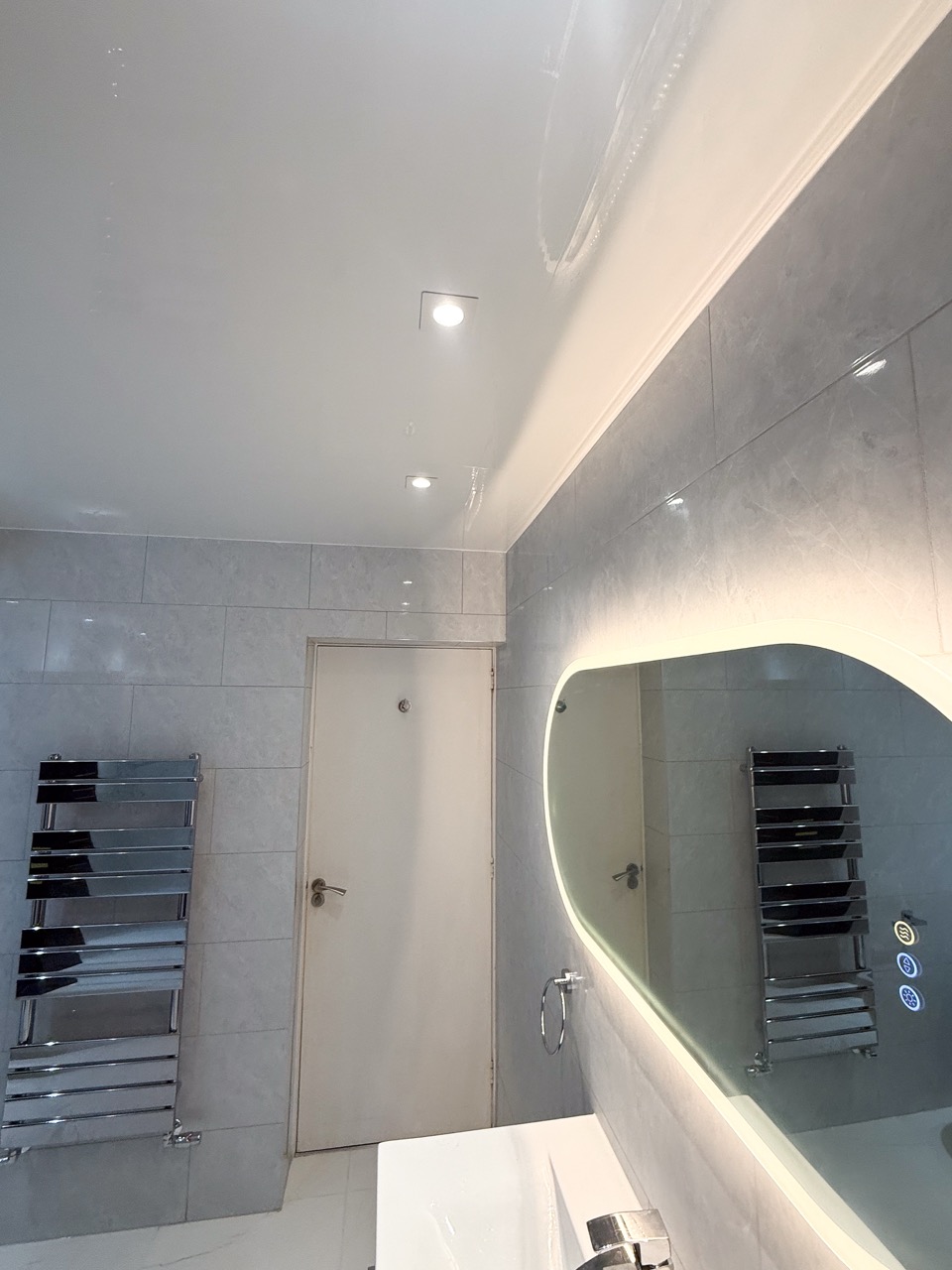
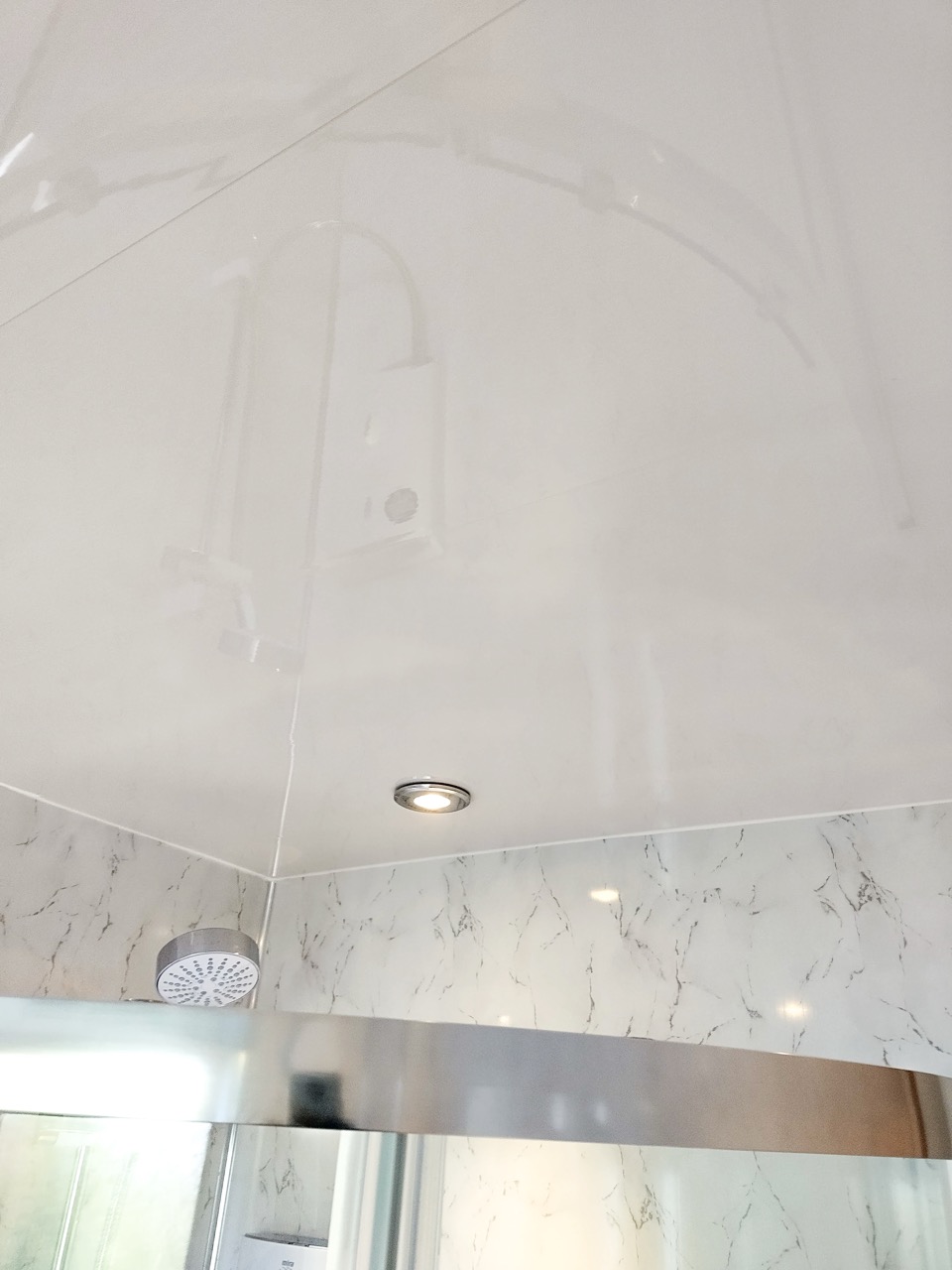
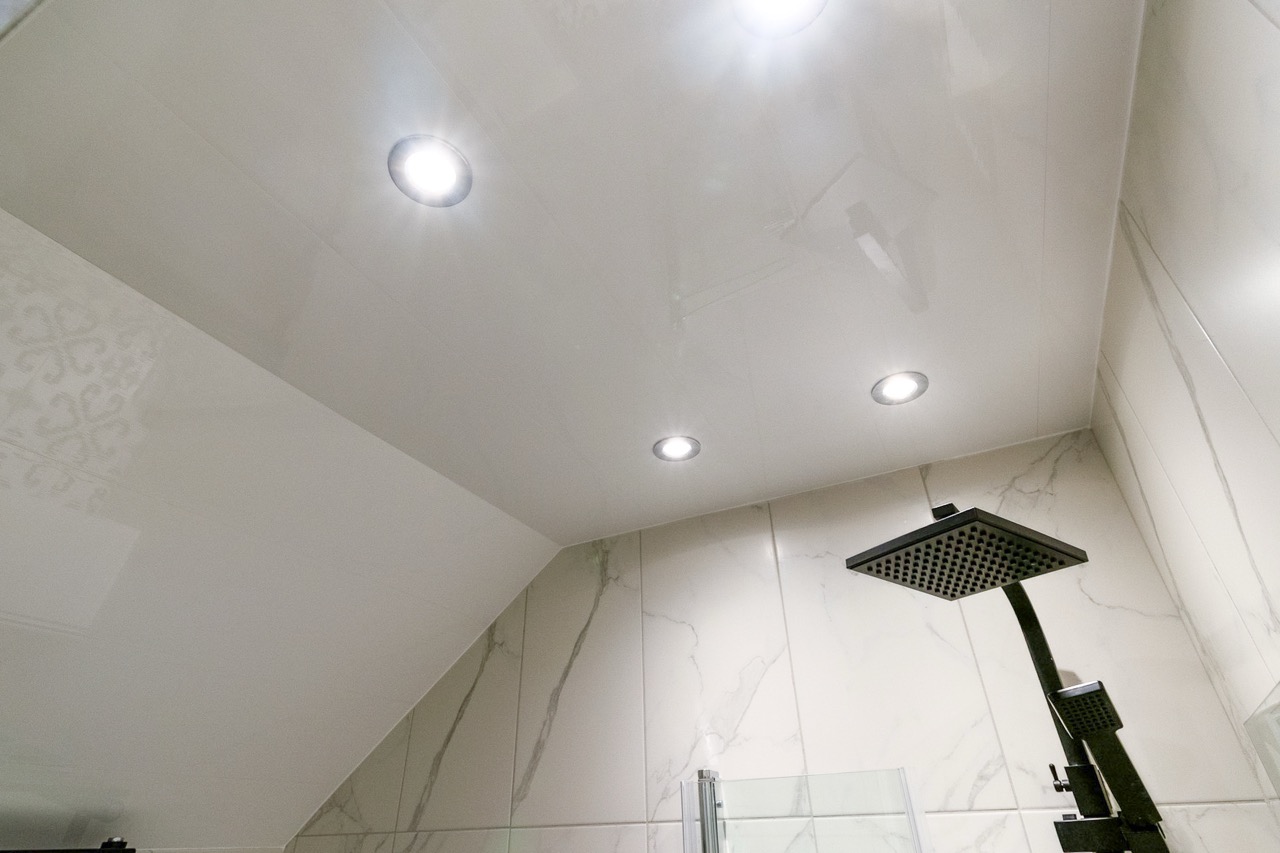


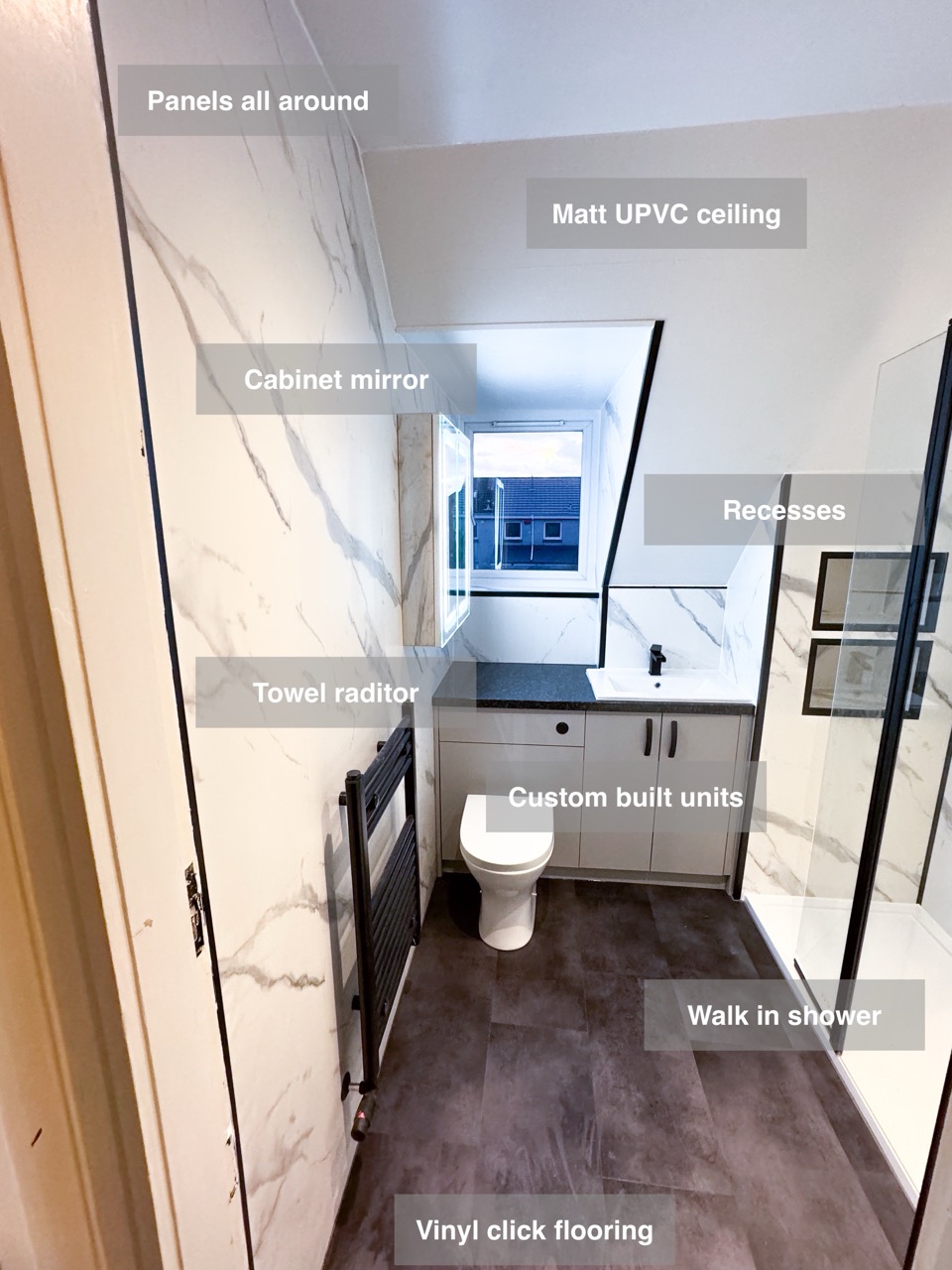


Plastered Ceiling
A plastered ceiling is a classic choice for those who prefer not to use UPVC panels. Depending on the condition of the existing ceiling, it may not always be possible to plaster over it, in which case we may need to install plasterboard first.
For homes built before 1999 with artex ceilings, we typically recommend adding a layer of plasterboard on top, as artex can contain asbestos. Covering it with new plasterboard is the safest option, after which it can be plastered and painted.
New moisture-resistant plasterboard is often the best choice for bathrooms. Even if your ceiling is in good condition, moisture-resistant plasterboard offers added protection against humidity, making it ideal for bathroom environments.
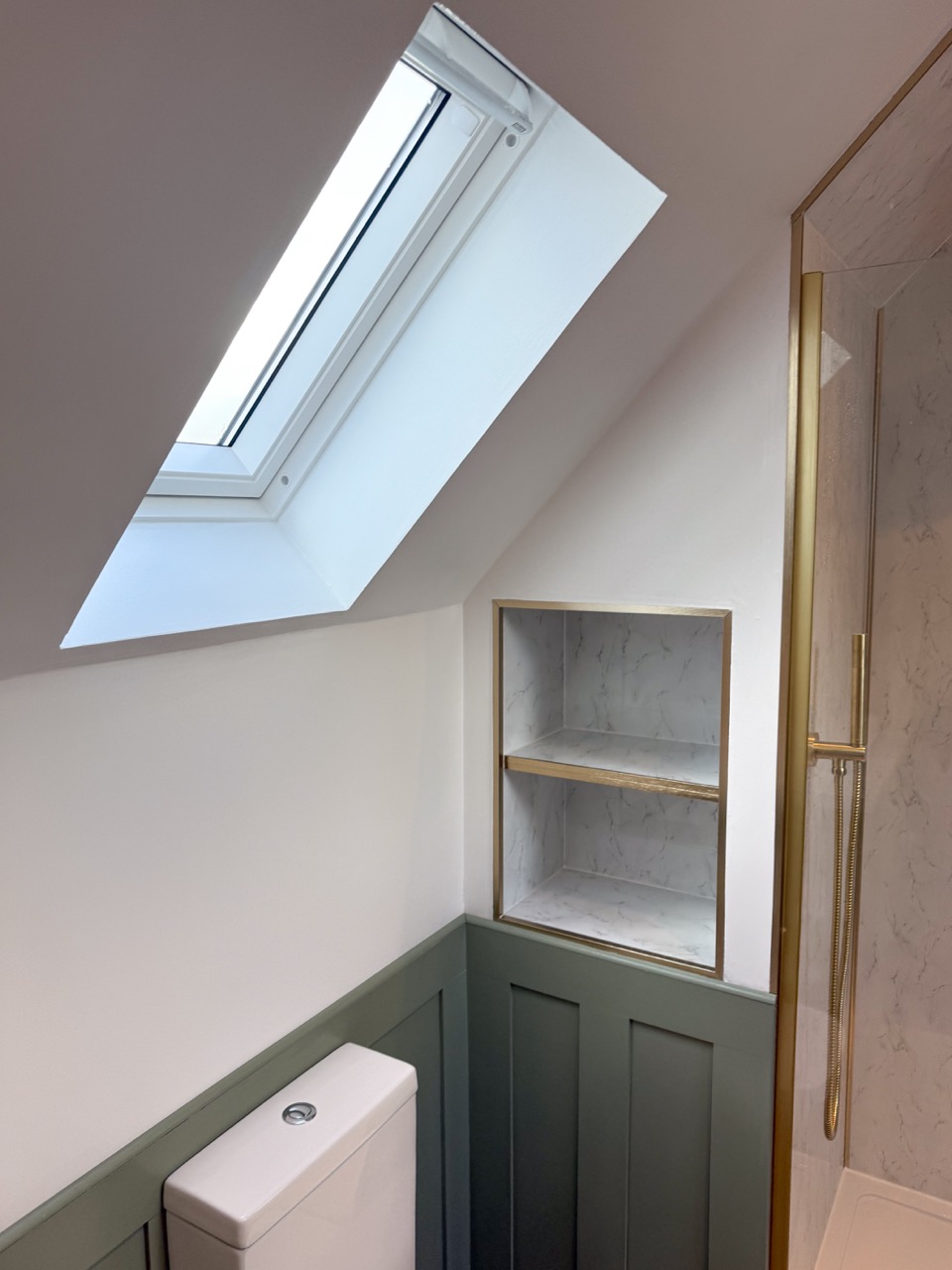


Lowering the Ceiling
Lowering the ceiling can offer several benefits, particularly in rooms with high ceilings. It can make the space feel more proportionate, reduce heating costs by lowering the air volume, and make changing light bulbs easier.
In many cases, we lower the ceiling slightly (even just a few centimetres) to accommodate panels, which are typically 2400mm in height. This ensures a neat finish without gaps at the top of the panels.
